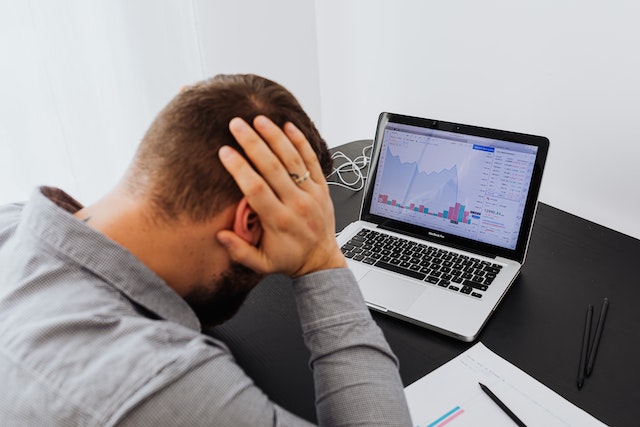Inflation, Interest Rates And Recession: Understand The Cycle

There are echoes of the past as rising inflation and interest rates threaten to push Australia and other developed economies into recession, but what is recession, exactly? How can inflation and interest rates interact to trigger a recession?
Former Australian prime minister and treasurer Paul Keating infamously stated in 1990, following the release of data showing another fall in Australia’s economic growth rate, that “this is the recession we had to have”.
The Reserve Bank of Australia had raised official interest rates to almost 20 per cent in a bid to combat the asset price inflation that prevailed at the time.
Australia duly slipped into a recession that officially lasted until late 1991.
More than 30 years later, there are some echoes from the past.
The latest surge in inflation and a new round of aggressive central bank hikes in interest rates threaten to push Australia and other developed economies into recession once again.
Some economists believe the current conditions may result in another recession that Australia simply must have.
This is thanks to the measures taken to offset the economic impact of the pandemic.
Can the causes of past recessions, and the efforts taken to end them as quickly as possible, inform government and policymakers on how to deal with the today’s economic challenges?
Same, but different
On a technical level, the term recession simply defines a period where economic growth, measured by gross domestic product (GDP), declines over two consecutive quarters.
Generally speaking, recessions are marked by reduced consumer demand.
This leads to reduced production of goods, rising business losses and failures, higher unemployment, loan defaults and falls in asset prices.
Yet while the symptoms of recessions are broadly the same, their causes are often quite different.
In the case of the early 1990s recession, the causes were broadly linked to the excessive borrowing and spending during the 1980s, which prompted sharp rises in inflation and interest rates. This ultimately culminated in the 1987 stock market crash.
The catalyst for the Global Financial Crisis (GFC) of 2007-2009 was ready access to large borrowings in the US and sudden rises in interest rates. The result was large-scale mortgage defaults in the US that led to a global credit crunch.
While Australia avoided heading into recession during the GFC, the US and many other countries did not. It took years for the US economy to recover.
The current economic malaise has similar symptoms to those that sparked the most recent recessions.
However, it is largely the result of the fiscal stimulus packages that were enacted by governments around the world to tackle challenges caused by the pandemic.
Governments and central banks pumped huge amounts of money into their economies.
In Australia, official interest rates were reduced to almost zero, and the RBA made significant purchases of Australian state and federal government bonds to support the economy.
Some central banks slashed their official rates to below zero.
Low interest rates fuelled spending and inflation, and starting in 2021, central banks have been raising interest rates at a record pace to try to stop inflation in its tracks.
Analysing the latest cycle
The length of recessions can vary considerably. On average, they last less than 12 months, but some can last much longer.
It mostly comes down to what measures policymakers take to stabilise economic growth.
Warren Hogan, chief economic adviser to Judo Bank, believes the economic shock we’re currently seeing across the global economy arising from the pandemic will be transitory.
“It always was going to be. It’s just some economists and central banks led us to believe that transitory was measured in weeks and months, whereas in the world of macroeconomies you measure it in months and years.”
Hogan says the efforts by governments and central banks to tackle inflation are starting to work, with supply chain pressures easing and some goods prices starting to decline.
The next issue, though, is whether the steps being taken will trigger a spike in labour costs as workers seek out higher wages to address rising living costs.
“We’re still sort of six-to-12-months-into-this-inflation story, and we’re still trying to get policy back to a neutral setting by not helping the economy and making matters worse,” Hogan says.
The recession outlook
Where are we at now? Can Australia avoid a recession?
Hogan says the chances of that are exceptionally low. The more important question is what a recession would look like.
In the absence of a financial crisis, Hogan notes, “it’s likely to be a long, drawn-out, shallow recession”.
“That’s got its good and bad points, because it does contrast with what we’ve typically seen in the last 30 years, which is short, sharp recessions.
“A long drawn-out one will not only potentially make it more difficult to build momentum on the other side, but also it will be socially and politically difficult.”
To this point, Hogan believes government and household finances will come under increasing pressure due to higher interest rates, and this will drive more business failures.
“That will free up labour for other purposes and help relieve pressures on labour markets.
“But the core of the business community, I think, is probably in the strongest position in the economy, particularly in the non-listed area, because they do have a lot of liquidity on their balance sheets.
“This is going to be a very critical time for business, and business will lead us through and out of this recession.”
Source: InTheBlack
